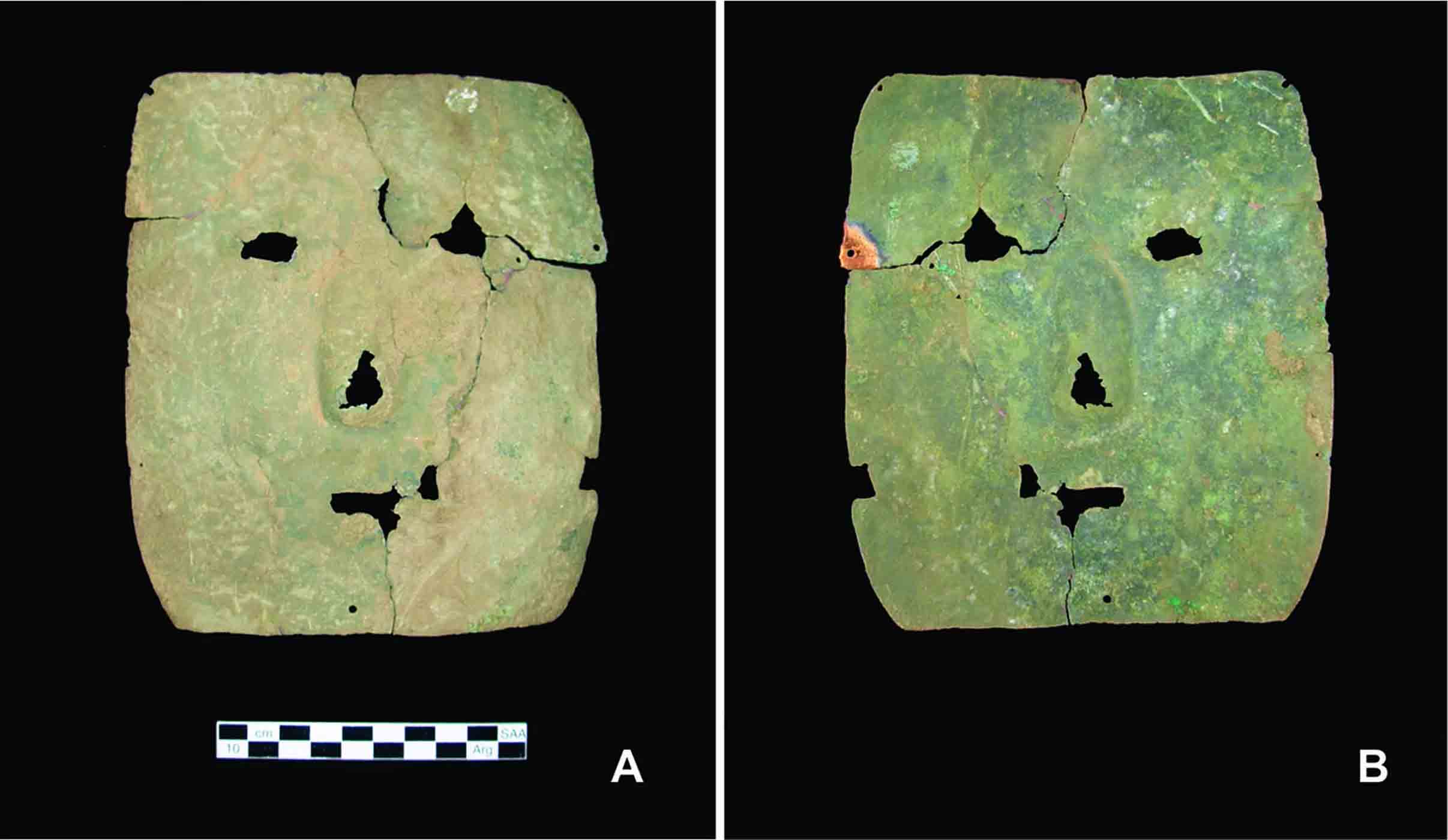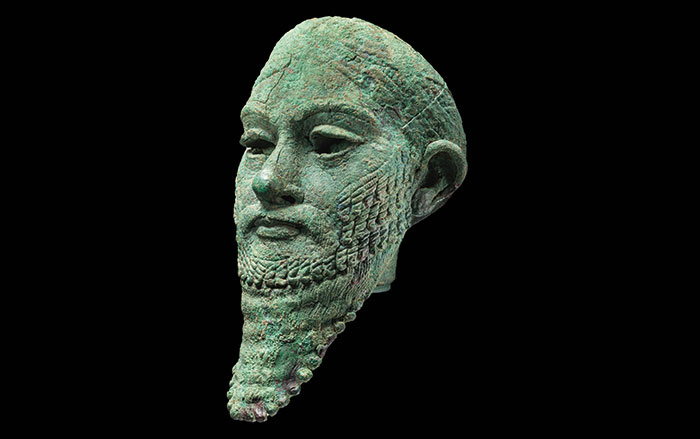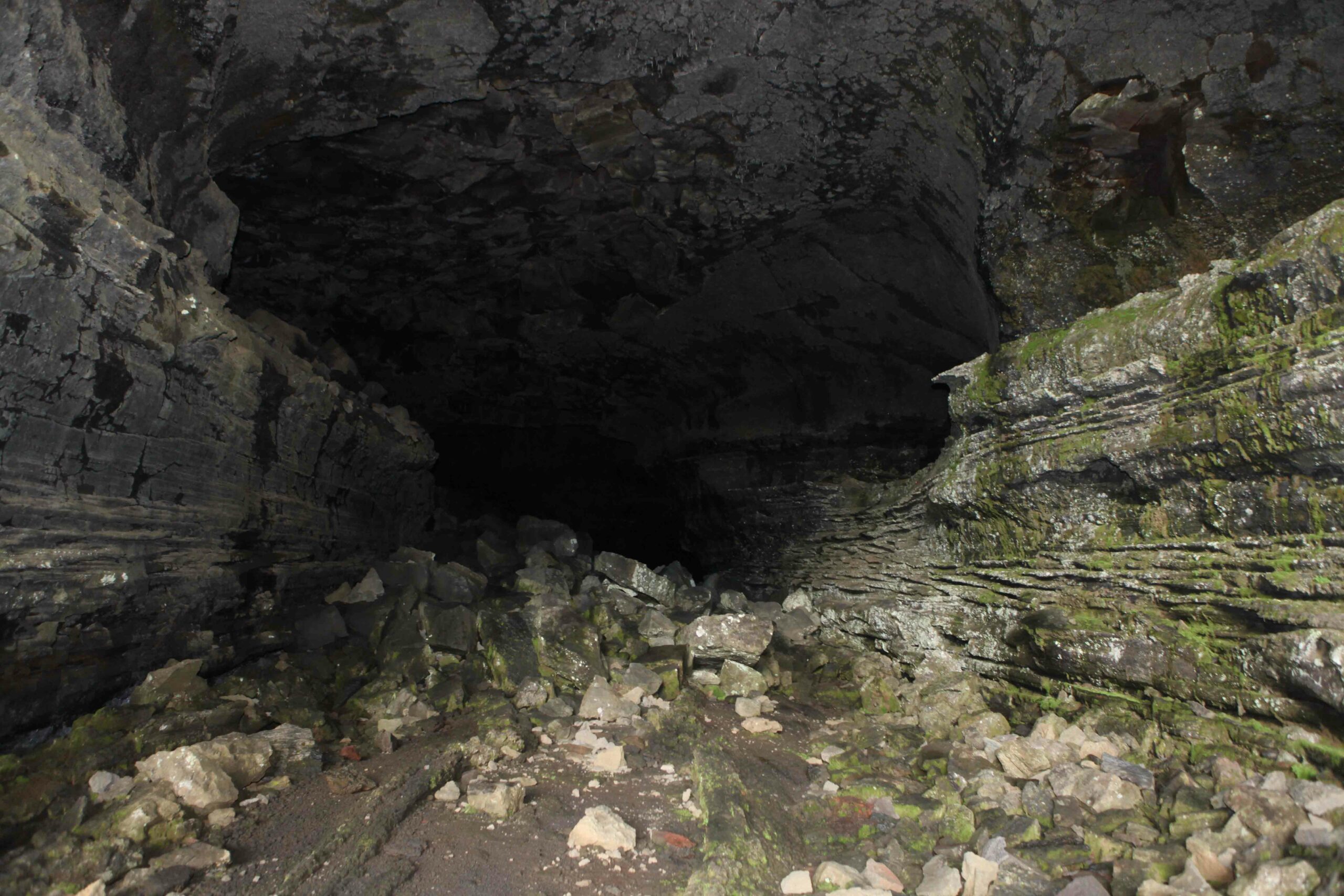
BUENOS AIRES, ARGENTINA—A 3,000-year-old mask has been discovered in an ancient cemetery in northwestern Argentina, according to a report in Live Science. The mask rested on a pile of the bones of an estimated 14 people that was exposed in the southern Andes during the rainy season. Made of a piece of rectangular-shaped copper measuring about seven inches long and six inches wide, the mask has holes marking the positions of eyes, nose, and mouth. Small openings at the edges of the mask may have been used to fasten it to a person’s face or to another object. A copper pendant and a stone bead were also found nearby in the burial of a single child. The researchers, led by M. Cristina Scattolin of the Juan B. Ambrosetti Museum of Ethnography, said that deposits of copper have been found within 44 miles of the burial site, which suggests that the copper items could have been produced locally. It had been thought that metalworking in South America at this time was a skill limited to people living in Peru. To read about a mask discovered in a different part of the world, go to “Mask Metamorphosis.”










